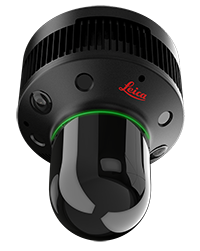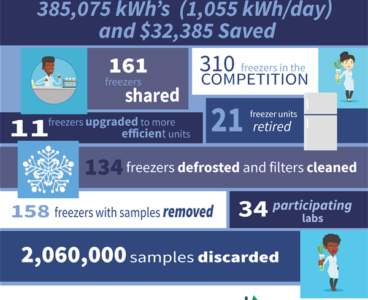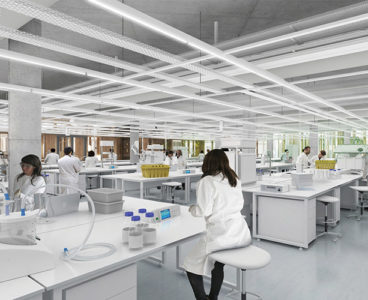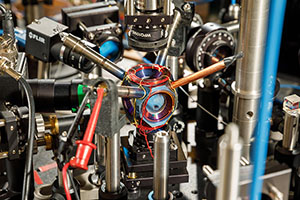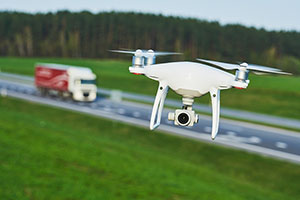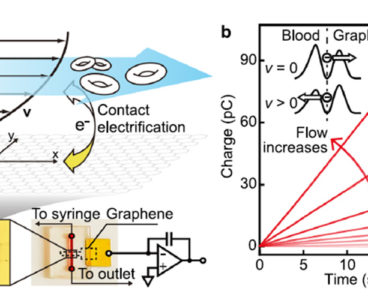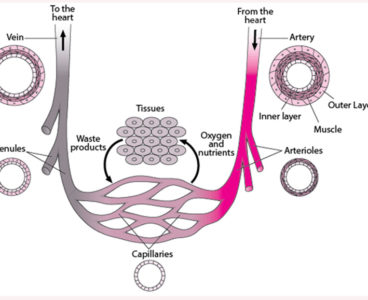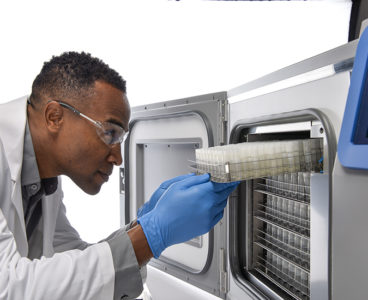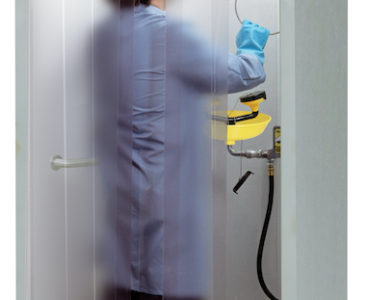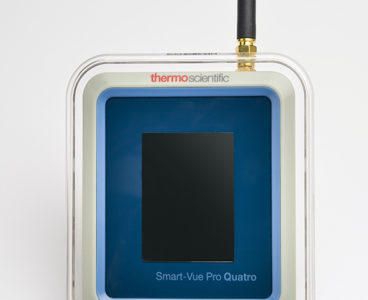From the SLAC National Accelerator Laboratory The newly upgraded Linac Coherent Light Source (LCLS) X-ray free-electron laser (XFEL) at the Department of Energy’s SLAC National Accelerator Laboratory successfully produced its first X-rays, and researchers around the world are already lined up to kick off an ambitious science program. The upgrade, called LCLS-II, creates unparalleled capabilities…
Q-CTRL introduces quantum sensing division to meet market demands
Q-CTRL, a developer of useful quantum technologies through quantum control infrastructure software, introduces its quantum sensing division, which has become one of the largest in the world. The team will showcase its capabilities publicly for the first time at the Army Quantum Technology Challenge (QTC) in Adelaide on August 10 and 11. Q-CTRL is delivering…
R&D 100 winner of the day: OH0TA OVMed Medical Image Sensor
OmniVision’s OH0TA OVMed medical image sensor is the world’s smallest commercially available image sensor. With a package size of just 0.55 mm x 0.55 mm, featuring a 1.0-micron pixel and a 1/31 optical format, it is smaller than the Guinness World Record held by its predecessor and quadruples resolution and provides wafer-level optics in a…
UniFlow SE FM Floor-Mounted Walk-In hoods for large processes
UniFlow SE FM Fume Hoods are designed for synthesis, distillation and other rack type operations where tall apparatus is used, or equipment is rolled into the work area. Full 70-in. viewing height for ease of access and unobstructed view of fume chamber. Chamber sizes include 48, 60, 72, 96, and 120 in. and depths of…
Enclosures isolate robotic and lab automation processes and equipment
EnviroMax Enclosures are specifically engineered to isolate robotic and lab automation processes and equipment while maintaining a safe working area. These enclosures provide either exhaust air systems or clean workstation environments. They are designed to isolate liquid-handling workstations, HPLC equipment sample weighing, high-throughput screening, powder handling and other lab automation processes. The enclosures are engineered…
R&D 100 winner of the day: BLK247 from Leica Geosystems, part of Hexagon
The Leica Geosystems BLK247 is a smart 3D surveillance system that uses sensor fusion technology — a combination of video cameras, thermal imaging and LiDAR — along with edge computing and AI to instantly detect and report physical changes within a space. The BLK247 is multi-sensor device that provides 360° horizontal by 270° vertical field-of-view…
A cool game for one hot competitor — the 2021 Freezer Challenge
International Freezer Challenge honors Univ. of Illinois with 2021 “Winning Streak Award.” By Becky Chambers Hennessy, contributing writer (This is part two of a two-part series. Read part one, Facing sustainability in the lab, here.) The University of Illinois Urbana-Champaign is continuing a hot streak in arguably the coolest competition around. The university was recognized…
Facing sustainability in the lab
By Becky Chambers Hennessy, contributing writer Scientific research leaders are taking a long look in the mirror. They see their laboratories as home to beneficial scientific breakthroughs, in areas from epidemiology and the coronavirus to climate change and greenhouse gases. They’re also recognizing them as resource-intensive spaces with enormous carbon footprints. It’s an irony that’s…
Sandia Labs shows advanced wayfinding tech could finally become compact, fieldable
From Sandia National Laboratories Don’t let the titanium metal walls or the sapphire windows fool you. It’s what’s on the inside of this small, curious device that could someday kick off a new era of navigation. For over a year, the avocado-sized vacuum chamber has contained a cloud of atoms at the right conditions for…
CAL Analytics’ research to detect and track lower altitude aircraft in Ohio
CAL Analytics, a company specializing in the development of automated and autonomous systems, will receive funding from the Ohio Department of Transportation (ODOT) office of Statewide Planning & Research to conduct research on “Open Framework Standards for A Combined Aircraft Sensor Network.” The research objective is to develop a means to detect and track lower…
Atlas delivers faster solar simulation testing
Atlas, maker of weathering testing technology, has announced the expansion of its German commercial weathering testing laboratory to provide faster solar simulation testing. International customers now have the ability to significantly expedite research, development and quality control of materials and products for automotive, electronics, aerospace and military applications – even on short notice. Part of…
Graphene-based flowmeter sensor measures nano-rate fluid flows, Part 3: The sensor
by Bill Schweber, Contributing Author The first part of this article looked at the challenges of sensing nano-level flow rates such as found in the blood vessels. In contrast, the second part looked at graphene, an allotrope of elemental carbon at the heart of a new sensor used to measure those flows. This third and…
Graphene-based flowmeter sensor measures nano-rate fluid flows, Part 2: The graphene context
by Bill Schweber, Contributing Author The previous part of this article looked at the challenges of nanoflow sensors, especially with respect to blood flow. This part looks at graphene, which is the basis for the new sensor. Graphene is a material structure which did not exist until relatively recently. However, its constituent element of graphite…
Graphene-based flowmeter sensor measures nano-rate fluid flows, Part 1: The challenge
by Bill Schweber, contributing author When it comes to nearly all biological measurements, the ranges of many of the parameters of interest are orders-of-magnitude below those with which many engineers are familiar. Instead of megahertz or even kilohertz, the living-creature world is in the single or double-digit hertz range, such as the roughly 60+ beats…
Samples protected in new controlled-rate freezers that support industry requirements
In line with the need for pharmaceutical research, cell and gene therapy, vaccine production and biobanking laboratories for dependable sample protection, the new series of controlled-rate freezers from Thermo Fisher Scientific provides precise, repeatable freezing capabilities, while enhancing data traceability to support GMP and 21 CFR part 11 requirements. The Thermo Scientific CryoMed Controlled-Rate Freezers…
Hemco’s Containment Control System protects samples from contamination
The “CCS” Containment Control System, from Hemco, is engineered to safely contain and control airborne particulate from sampling procedures. Dispensing from drums and weighing operations are typical applications. Drums or equipment can be easily rolled into the enclosure through the strip curtain entrance. Both the process and surrounding environment are protected from contamination. A downward…
Specialty transfer systems spelled out in safety data sheets (SDS) guidelines
By Nancy Westcott, President of GoatThroat Pumps In laboratory environments, hazardous chemicals such as solvents, acetone, acids and cleansers are frequently transferred from large drums or containers into smaller vessels such as Erlenmeyer flasks or beakers. Given that many of these chemicals and branded formulations are flammable, hazardous or potentially combustible, environmental, health and safety…
Emergency Safety Shower Decontamination Booth, when safety is paramount
When time is of the essence, after an exposure to a hazardous chemical substance, any delay, even for a few seconds, can result in serious injury. OSHA and ANSI require that emergency showers be located within 10 seconds walking distance from a hazardous site location. The new Laboratory Applications Emergency Shower Booths are available with…
Safely contain airborne particulate with CCS (Controlled Containment System)
CCS (Controlled Containment System Enclosures) are engineered to safely contain and control airborne particulate to and from sampling procedures. Dispensing from drums and weighing procedures are typical applications. Drums or equipment can be easily rolled into the enclosure through the strip curtain entrance. Both the process and surrounding environment are protected from contamination. A downward…
UniFlow FM floor mounted walk-in hoods for large processes
UniFlow FM Fume Hoods are designed for synthesis, distillation and other rack type operations where tall apparatus is used or equipment is rolled into the work area. Full 70-in. viewing height for ease of access and unobstructed view of fume chamber. Chamber sizes include 48 in., 60 in., 72 in., 96 in., and 120 in.…
Next-generation remote monitoring solution supports uncompromised sample safety and integrity
Biotechnology, pharmaceutical, clinical and academic laboratories can now benefit from a next-generation remote monitoring solution designed to enable sample protection, workflow efficiencies, asset/cost optimization and regulatory compliance. With the option for an on-premise or cloud setup, the Thermo Scientific Smart-Vue Pro Wireless Monitoring Solution provides real-time, continuous monitoring of critical laboratory equipment parameters and immediately…
Purair Basic ductless fume hoods
The Purair Basic ductless fume hoods are designed to provide high level performance features at an affordable price. The hoods are found in research laboratories, educational facilities and forensic laboratories throughout the world and are designed to protect the user and the environment from hazardous vapors generated on the work surface. At the heart of…
Hemco’s emergency safety shower decontamination booth
When time is of the essence, after an exposure to a hazardous chemical substance, any delay, even for a few seconds, can result in serious injury. Emergency showers must be located 10 seconds from hazardous work zones, as required by ANSI and OSHA. HEMCO Decontamination Booths are fully assembled and ready for installation to water…
Purair Basic ductless fume hoods
The Purair Basic ductless fume hoods are designed to provide high level performance features at an affordable price.The hoods are found in research laboratories, educational facilities, and forensic laboratories throughout the world and are designed to protect the user and the environment from hazardous vapors generated on the work surface. At the heart of the…
Safe coronavirus research with Systec autoclaves
The coronavirus COVID-19, which first appeared in the Chinese province of Wuhan in December of 2019, spread to all continents of the world within just a few weeks. National and international authorities are currently managing efforts to contain the virus by deliberately interrupting infection chains. At the same time, the virus is being examined at…






